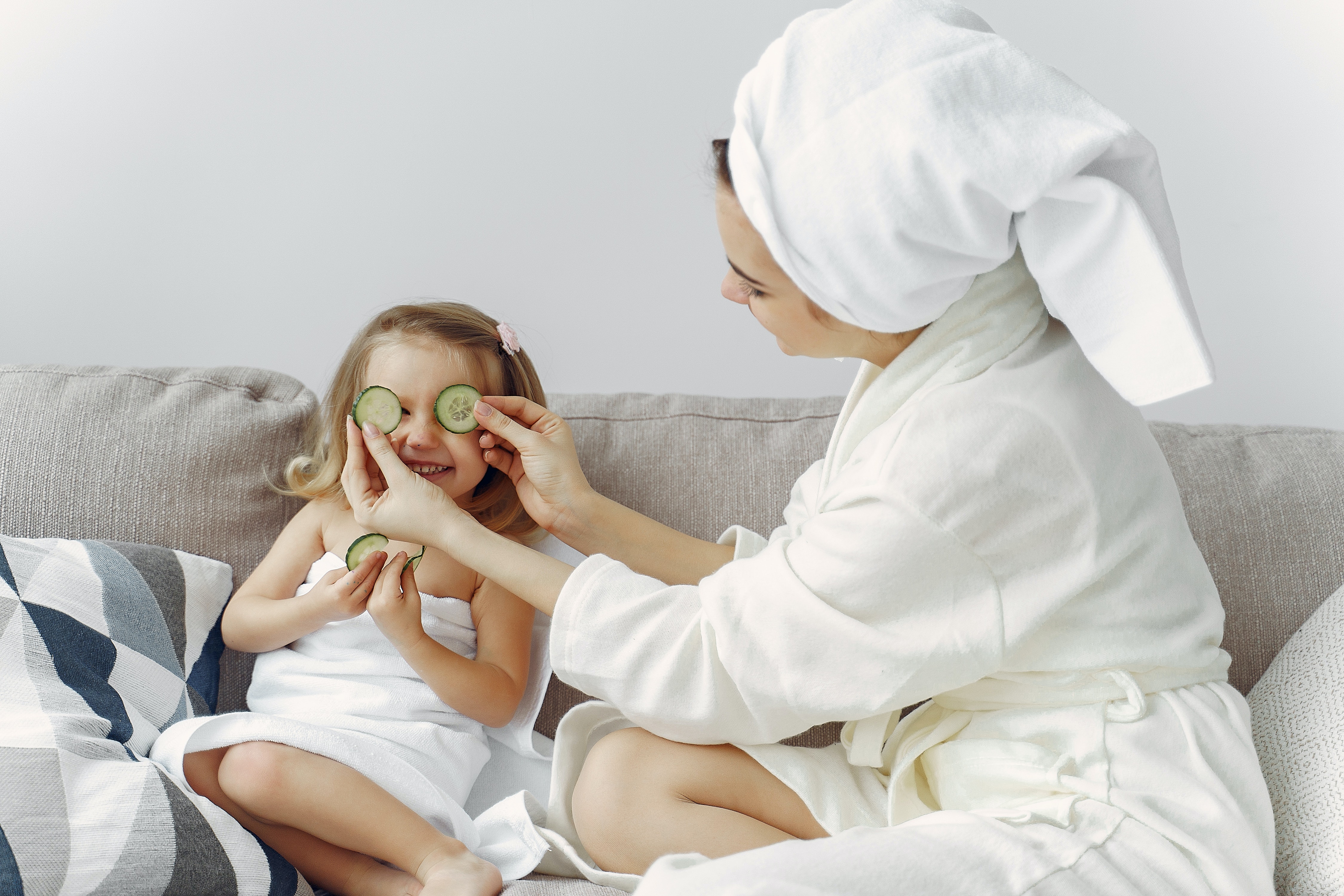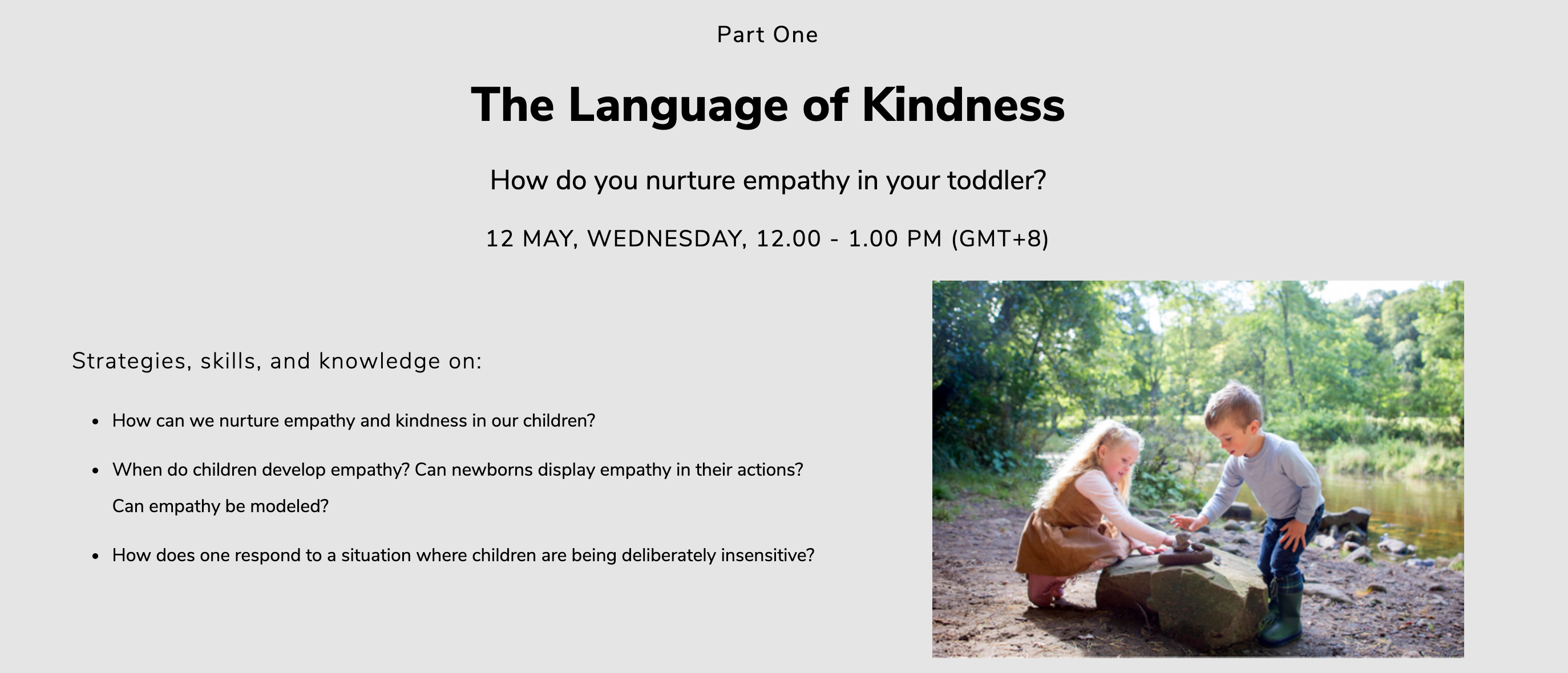-1.png)
EtonHouse Singapore
Denise Teo, Pedagogue at EtonHouse International School
Q: My 2-year-old son is fighting us off when it's time to brush his teeth. I ask him to pick between his red and green toothbrush. Most of the time he will refuse with a gesture that implies he doesn't want to brush his teeth. I sometimes have to hold him tightly and brush his teeth. What is a better approach through respectful parenting that encourages him to brush his teeth willingly? We also tried different kinds of toothpaste and watched a cartoon in relation to brushing his teeth.
Denise: I see that you have offered your son choices pertaining to which toothbrush to use. Good on you! Now we need to think about offering him something visual that he can see to prepare him for the duration in which toothbrushing is going to take. I personally love sand timers compared to counting down timers on our phones because 2-year-olds are still learning to make sense of numbers around them. Another way is to model and show your son how YOU brush your teeth. I did a lot of this and showed my sons how to gargle and spit. It became a fun activity to “see Mama brush teeth”. Play works particularly well for children at this age. I personally like to distract them while I’m brushing their teeth. Sometimes I offer something interesting from the cabinet like a box of floss, or I fill up the basin with some water so that they can brush their “toys’ teeth”. Hopefully, these pointers are helpful for you!
Q: My child complains about everything. If I ask for a task to be done or a schedule to be followed, the answer is an automatic 'no'. I am so exhausted by constantly explaining why we do certain things. We have only one after-school enrichment, allow an hour of television a day as well as movie nights on the weekend. We read and play all the time. Is there a way to cheer my child up and maybe reduce the constant stream of opposition?
Denise: This is a brilliant question. I, too, sometimes find myself taking on the role of the instructor at home instead of a parent. Do this, don't do that. Excessively explaining every detail of the reason behind each decision. Hearing that your child says "No" sounds like there is a power struggle that is taking place.
We need to understand that respectful parenting is not permissive parenting. The child is not the one that decides the next cause of action all the time. In respectful parenting, we listen to our children, hear them out and value their input. But these are all done within the boundaries that have been set prior, with agreement from our children. No matter what age your child is, we should strive to work on the agreed plan and routine, even if it may result in a meltdown. For example, if it is time to prepare for dinner and the TV needs to be turned off at 6 pm. Offer your child the remote control at 5.45 pm and start counting down, 15, 10, 5 more minutes, and the TV will be switched off. Offer them the choice if they would like to switch it off themselves or have you do it.
The bottom line is you aren't asking for your child's permission to switch off the TV, you are simply carrying out what is agreed prior. It is also important to invite your child to articulate this agreement before the TV is switched on, such as "Can you tell Mama what is the agreed time to switch off the TV?" By outlining the boundaries clearly with our children and carrying them out accordingly, it will help to lessen the power struggles, and you'll have a better, regulated child who is not out there to oppose you all the time.
Lisamarie Hughes, Principal, EtonHouse International School Sentosa 
'Parenting is a journey. Every journey is unique and we do not need to compare our journey or doubt our effort. We pour love into our children every day and as long as we are able to reflect, personally admit when something could be better and try alternatives, we are doing our best.’
Q: My son crawls and climbs everywhere whenever we read. I am wondering if you have suggestions on how to respond to it - should I continue reading while he crawls around or should I be looking at a different time or approach to reading?
Lisa: This is such a great question and many families will connect to your reflections when they are trying to warmly engage or connect with their child through a book or story.
Firstly, we can consider the time we are doing this. Is it a time when our child is tired or hungry or has a strong desire to move? If there is a strong desire to move, maybe try spending time outside at a park, exploring nature or some general rough and tumble play together at home. After lots of positive physical exploration, a story could then be used as the cooldown time activity while you enjoy a drink of water together.
If your child continues to move around, continue reading. Consider how you are showing your interest in the story by adding suspense and invitation by changing up your voice, your reading speed and showing genuine curiosity about the next page “I wonder what will happen next?” Children are amazing at moving and learning at the same time! It is what they do best at a young age. After some time, if they sense from your engagement that the book is such a fascinating material, there will be moments where they will pause what they are doing, notice you, and come closer to engage with you.
Another meaningful possibility to explore would be setting the mood and scene. Can you make the room darker and enjoy a story using a torchlight? Or set up a cosy area with lots of cushions to relax on together? These considerations make the experience special, different and inviting. Bedtime is another relaxing time to try reading a book or telling a story to help your child unwind.
Finally, my last tip is to try whispering a story. This often draws children in as they want to get closer to see what is so special and what is captivating you. Happy reading!
Q: My question is about choices. We all know that a balanced diet is important for growing children. Should we let them choose what to eat? How can we gently encourage them to eat more greens?
Lisa: Planning a balanced and nutritious diet for children to support their amazing body and brain growth is definitely something on the minds of many families. Depending on your child's age group, you can try different approaches to partner with your child at mealtimes and still ensure that they will eat from different food groups. For very young children, they need to see us making those same choices. They need to see different food groups such as vegetables being served on the dining table.
At family mealtimes, talk about your choice of vegetables, how it tastes and how it is helping your body. For babies, invite them to touch, smell and engage with the vegetables through their senses. This builds positive relationships with food. Often, adults do not want their child to use their hands with food. However, we encourage you to allow it as it is a natural part of children's development. We also often observe how children and babies need to be offered the same food choice repeatedly in a positive and relaxing way for children to accept and try it out. Trying different ways of presenting the food also helps, such as cutting them into different shapes and styles. Sometimes, a change of plate design or a plate with compartments for food groups to be presented does the trick!
If your child is a little older and a preschooler, you can read stories or sing songs about vegetables or invite your child to help you wash and chop the vegetables. This also builds positive relationships with food. As we move through this process, we can also consider our expectations. Do we expect our child to eat all the vegetables? Can we provide room for our child to try it and celebrate each small step? If our child does not like the taste, can we respect that, build trust with them by letting them try other vegetables instead, and maybe return to that one again later?
For Primary children or older, your child can be heavily involved in the menu planning. Allow him or her to decide what vegetable they want to go with their food. Can you invent new recipes and dishes together with veggies in them? Can you go on a mission to make eating veggies more fun and experiment with new ideas?
The above suggestions offer room for choices and partnership with the overarching family value for vegetables and healthy eating being constantly reinforced. With time, effort and kind consistency, vegetables can be woven into the new norm on your child’s plate.
Get more tips and strategies during our EtonHouse Parenting Webinar Series. Register now.




